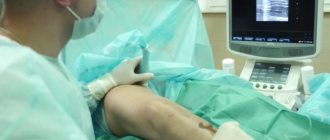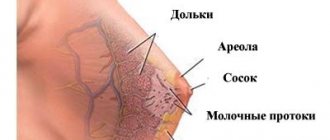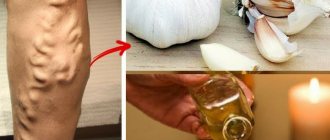Varicose veins are an unpleasant and very insidious disease.
Attention! Problems with varicose veins are not limited to cosmetic problems! It’s unpleasant, of course, that your legs look like this:
But if the disease is not treated, there is a high probability that your legs will look like this:
Sepsis, gangrene and trophic ulcers with varicose veins are not a complete list of complications.
VARICOSIS: WHAT TO DO?
Go to the doctor and as soon as possible! There is no need to take the disease to extreme forms. The sooner treatment begins, the higher the chances of a full recovery!
VARICOSIS: TREATMENT TECHNOLOGIES
In the initial stage of the disease, it is possible to use conservative treatment methods, including wearing compression stockings, taking special medications and physical therapy complexes. These techniques can slow down the progression of the disease, but the cardinal method is the removal of varicose veins.
Modern technologies for the treatment of varicose veins include: sclerotherapy (clogging a damaged vessel with a special composition), laser surgery to remove veins (point exposure to a damaged vein with laser radiation) and phlebectomy.
WHAT IS PHLEBECTOMY?
Phlebectomy is the surgical removal of varicose veins. (More about phlebectomy...)
| Make an appointment with Professor Matveev |
WHY PHLEBECTOMY?
Despite the development of new technologies for removing varicose veins, non-surgical and minimally invasive technologies have a number of contraindications and limitations. In this case, the only option is the classic varicose vein surgery (varicose vein removal). There are also a number of diagnoses for which phlebectomy is considered the only possible treatment method. In case of previous or threatening bleeding from varicose veins, phlebectomy should be performed immediately!
ATTENTION!
There are no therapeutic methods for treating and restoring the properties of blood vessels! There are no magic “folk remedies”! For varicose veins, surgery or another method of vein removal has no alternative!
HOW DOES THIS HAPPEN?
Phlebectomy is a well-performed operation. Modern technologies allow it to be carried out with minimal cosmetic consequences, “pulling out” the damaged vein through small incisions or punctures. Surgeries for varicose veins are performed under reliable and safe spinal anesthesia.
REHABILITATION AFTER VEIN REMOVAL SURGERY
The rehabilitation process after phlebectomy is selected individually for each patient and depends on many factors, including: the volume of surgical intervention, the general health of the patient, the severity of damage to the veins, etc.
The following procedures are recommended as general rehabilitation measures:
- In the first few hours after vein removal surgery, you should make gentle movements with your legs: bend and unbend, turn, lift slightly above the bed - this stimulates blood circulation
- The next day, compression stockings or elastic bandage are applied. Compression is necessary for two months after vein removal surgery
- After the stitches are removed, water procedures and a complex of physical therapy are prescribed.
- In order to prevent the formation of blood clots, a course of special massage is prescribed; it is also possible to prescribe medications
- For older people, a set of special exercises is recommended to avoid complications.
Accurate adherence to rehabilitation procedures allows you to restore the functions of blood vessels in the shortest possible time and transition to a normal lifestyle.
CONSEQUENCES OF VEIN REMOVAL OPERATION
Modern technologies, specialized equipment and the experience of surgeons minimize the risk of phlebectomy. The consequences of vein removal surgery, if the doctor’s instructions are strictly followed, are almost always favorable - restoration of health and return to a normal lifestyle.
COST OF VEIN REMOVAL OPERATION
The cost of vein removal surgery depends on the category of complexity. In any case, Dr. Matveev’s clinic always offers affordable prices with the highest quality and first-class service.
CLINIC OF DOCTOR MATVEEV
Remember that by agreeing to a phlebectomy operation, you are entrusting your life and health into the hands of the surgeon. Dr. Matveev’s clinic is the highest responsibility. For you - world-class vascular surgeons, a well-equipped hospital, a complete examination before surgery, a warm attitude, and most importantly - hundreds of successfully performed operations.
TRUST THE BEST!
| Make an appointment with Professor Matveev |
DON'T WASTE TIME! FORGET ABOUT THE DISEASE! GET YOUR BEAUTIFUL AND HEALTHY LEGS BACK!
Phlebectomy
It should be remembered that surgery to remove varicose veins is prescribed only in cases where the success of conservative methods can no longer be counted on. This means that without removing varicose veins, stop
increasing venous insufficiency, eliminating the risk of life-threatening thrombosis, and avoiding the threat of trophic ulcers is impossible. At this stage of the disease, conservative treatment (wearing compression stockings, taking phlebotonics) can only slow down, but not stop its progression. And the further the changes have gone, the more difficult it is to cope with them. Therefore, there is no point in delaying surgery for varicose veins.
Nowadays, the technologies of already tested methods for removing varicose veins are constantly being improved and new ones are being developed in parallel with them. At the same time, despite the development of modern minimally invasive methods for treating varicose veins (sclerotherapy, endovasal laser coagulation, radiofrequency ablation), phlebectomy, the surgical removal of varicose veins, still remains a fairly frequently used operation to get rid of this disease.
Phlebectomy is one of the very first technologies for the treatment of varicose veins, when, through surgery, the section of the vein affected by varicose veins is removed to normalize blood flow. It should be noted that during this medical procedure, only the saphenous veins are eliminated, through which only 10% of the blood moves, so this operation for varicose veins is absolutely safe for the deep veins and the circulatory system as a whole. Very often, phlebectomy is classified as “aesthetic surgery”, since it not only improves blood circulation, but also has a beneficial effect on the appearance of the legs.
How is phlebectomy performed?
The operation is carried out using special probes. First, the blood vessel affected by varicose veins at the point where it flows into a deep vein is ligated and crossed, and then the veins in the legs are removed: a so-called guide probe is inserted into the vessel through incisions and this area is pulled out. In this case, all interventions are carried out through small incisions, onto which cosmetic sutures are subsequently applied, which makes postoperative traces less noticeable. In some cases, stitches are not applied at all, and the edges of the incisions are glued together with special adhesive strips. When performing a miniphlebectomy
The intervention is carried out through skin punctures, which heal independently and almost without a trace. Phlebectomy is usually performed in a one-day hospital stay, without long-term hospitalization of the patient. And this is its undoubted advantage.
Indications for phlebectomy
- pathological expansion of the saphenous veins;
- extensive varicose veins;
- impaired blood flow;
- swelling and fatigue of the legs;
- trophic ulcers with varicose veins;
- acute thrombophlebitis of varicose veins.
In case of threatening or previously suffered bleeding from varicose veins, venectomy should be performed urgently.
The choice in favor of such surgical intervention is also made if it is impossible to use minimally invasive methods for treating varicose veins in a particular case.
Contraindications for this operation: Considering the danger of complications that varicose veins pose, as well as the improvement of the phlebectomy technique and its low invasiveness, phlebologist surgeons limit the use of this operation very rarely.
Preparing for a venectomy
Before prescribing phlebectomy, a patient with varicose veins must undergo duplex ultrasound scanning (USDG of veins). During the examination, the operating surgeon marks the affected veins, including incompetent perforating veins. Neglecting such markings threatens the usefulness of the intervention and may subsequently lead to relapse of the disease.
Preparation for the operation itself is simple. First, you need to take a shower and completely shave the leg on which surgery will be performed. It is necessary to take into account the fact that before phlebectomy, the skin of the legs must be absolutely healthy. The patient should come to the phlebectomy wearing loose shoes and loose clothing. If he is taking any medications, he needs to inform the doctor in advance. In addition, you must inform your doctor about possible allergies to certain types of medications.
Recommendations after vein removal
To ensure uniform compression after surgery, an elastic stocking or elastic bandage is placed on the limb. In the postoperative ward, the patient lies with his legs on a bolster or pillow, that is, elevated, he is allowed to turn over and bend his limbs.
The next day after phlebectomy, the patient can and even needs to walk. After the sutures are removed, which usually happens on the eighth or ninth day, massage, hydrotherapy and exercise therapy are indicated for successful rehabilitation. These measures help normalize venous outflow and prevent thrombus formation.
It is necessary to wear compression stockings after phlebectomy for another 1.5-2 months. It is also recommended to take venotonic drugs.
Complications of phlebectomy
The result of venectomy is determined by the stage of varicose veins, the course of the postoperative period and the age of the patient. If varicose veins are advanced, then after surgery pigmentation and compaction of the subcutaneous tissue may remain.
In the immediate postoperative period, bruising is almost always observed along the removed veins, which goes away on its own and is not considered a complication.
It must be emphasized that phlebectomy does not guarantee complete elimination of varicose veins: varicose veins are a systemic disease of the venous wall and can subsequently affect other veins. It should be understood that the main indication for venectomy or another method of removing varicose veins was and remains the prevention of complications of varicose veins - venous trophic ulcers and dangerous thrombophlebitis.
Properly performed phlebectomy reliably eliminates these complications.
It is also worth paying attention to the fact that phlebectomy is only one of the methods for treating varicose veins. The price of phlebectomy is comparable to the cost of other methods of treating varicose veins - endovasal laser coagulation or high-frequency ablation, scleroobliteration. The most optimal method of combating this disease is selected by a phlebologist individually after the patient undergoes a mandatory set of diagnostic measures.
| We perform phlebectomy only in a multidisciplinary hospital, where there is the ability to cope with any unforeseen situation. At the same time, the length of hospitalization is reduced to the necessary minimum, amounting to 1-2 days in most cases. The operations are performed under spinal anesthesia, which, due to its effectiveness and safety, has become the “gold standard” for such interventions throughout the world. The number of incisions, even with quite significant volumes of varicose veins, is kept to a minimum (2-4), their sizes are minimal. Closure of the incisions, if required at all, is done cosmetically, without sutures that would need to be removed. Therefore, attendance for dressings is not required in the future. Already on the first day after the operation, the patient walks freely, and the next day he goes home. Unlike most institutions, our Center does not require preliminary collection of many tests. All necessary examinations will be performed one day immediately before the intervention. During hospitalization, the patient needs to have with him only the required number (4-8 pieces) of elastic bandages. Preference should be given to bandages (Latvia) 3-3.5 m long (this is not an advertisement, but good advice!) From the first day of stay at the Center, the patient, at his request, is issued a certificate of incapacity for work of the established form for a period of 2 weeks. This period can, according to current standards, be further extended in the clinic at the patient’s place of residence. |
Your name:
Your phone number:
Send
Sclerotherapy
This technique is used to treat spider veins (reticular varicose veins) and veins of small diameter. During the procedure, a sclerosant, a special drug that seals the lumen of the vessel, is injected into the diseased vein. Over time, the vein “switched off” from the circulatory system disappears - it degenerates into connective tissue.
The idea of sclerotherapy is not new at all: attempts to treat varicose veins in this way were made back in 1863! Unfortunately, the drugs used at that time had too many side effects. Therefore, sclerotherapy was forgotten until the middle of the 20th century, until a reliable and safe sclerosant appeared in the arsenal of vascular surgeons. Already in the 1960s, sclerotherapy became a completely routine procedure in Western countries.
It is carried out as follows: the doctor performs a puncture of the vein - inserts a special, extremely thin needle with a microcatheter into it and injects the required amount of the drug to block the blood flow. This procedure is painless - administration of the sclerosant may only be accompanied by a slight burning sensation, which quickly passes.
At one time, you can make from 3 to 10 injections, depending on the type of sclerosant and, most importantly, the degree of vascular damage. If the number of veins affected by varicose veins is large, one procedure is not enough.
The popularity of sclerotherapy among phlebologists and patients was determined by several factors:
- no hospitalization or special preparation for the procedure is required;
- no anesthesia is required: painlessness is ensured by the anesthetic effect of sclerosant, the use of the thinnest corners and microcatheters;
- duration of the procedure – 20-30 minutes;
- absence of hematomas after the procedure;
- excellent cosmetic effect: no noticeable scars;
- quick rehabilitation: the patient returns to normal life immediately after the procedure.
Alas, sclerotherapy is not a universal technique. It is not suitable for treating large vessels: in this case, even with the use of modern foam sclerosants, the risk of relapses and complications is too high.
Removal of leg veins: low prices, high quality!
If you suspect varicose veins, contact our doctor immediately. At an early stage, conservative treatment methods can still be used:
- compression jersey,
- specific drugs,
- exercise therapy complexes.
However, it is often necessary to remove veins in the legs. Prices in our clinic are quite reasonable. You can definitely afford it. In addition, the operation itself is relatively easy for the patient.
Physical therapy after phlebectomy – only with our specialists!
Our clinic does not leave patients immediately after surgery. We provide physical therapy after phlebectomy, which helps you quickly get in shape and return to normal life.
The best exercise therapy specialists will work with you. They will select a set of exercises specifically for you. They will also always be ready to help the patient, tell him how to behave in a given situation, and how best to restore health to his legs.
By listening to them, you can quickly return to your usual rhythm of life. You can continue to enjoy every minute - because now you will have absolutely healthy legs! Our specialists will do everything to achieve this goal! Contact us to make sure of this!
Extravasal correction of deep vein valves
A technique aimed at correcting a damaged venous valve by narrowing it using special springs - venous correctors. These springs are “attached” to the main valves - and from “sick” valves turn into “healthy”. It all sounds very attractive. But there is no clear opinion on the method of extravasal valve correction. The results of this method do not give positive feedback from the phlebological community due to the high percentage of disease relapses and little clinical experience.
Phlebectomy: an operation that helps cope with varicose veins!
Phlebectomy is an operation prescribed when less radical methods of treating varicose veins have exhausted themselves. They can no longer prevent further development of the disease. In such situations, the risk of life-threatening complications such as thrombosis or trophic ulcers increases.
The stronger the changes, the more difficult it is to cope with them. In such a situation, the operation cannot be postponed. Phlebectomy involves surgical removal of a section of a vein damaged by disease. Thus, blood flow is normalized. Since only the saphenous veins, which carry only one tenth of the total blood volume, are removed, this procedure is generally safe for the circulatory system.
How is phlebectomy of the lower extremities performed?
Phlebectomy of the lower extremities is performed using specific probes. A blood vessel damaged by varicose veins is ligated and crossed at the point where it flows into a deep vein. A guide probe is then inserted into the vessel through the incisions, and this section is then pulled out.
All work is carried out through miniature incisions followed by cosmetic stitches. Traces after the operation thus remain almost invisible. Sometimes stitches are not applied at all, the edges of the incisions are glued together with special strips of adhesive.
Crossectomy with catheter sclerobliteration (intraoperative sclerobliteration)
A method of removing the main saphenous veins by exposing them to a chemical solution (sclerosant) or introducing a foam form of sclerosing solution into the dilated vein. It was developed in the 80s of the 20th century and modernized through the use of a foam form of sclerosing solution. The meaning of the operation is to ligate the great saphenous vein or small saphenous vein from a small incision and inject a chemical substance into the dilated vein, which burns its walls. The problem with this treatment method is the high rate of relapse (return) of the disease. However, this operation has the right to clinical use and in experienced hands is an effective surgical method.
Very cosmetic
In most Russian hospitals, varicose veins on the legs are removed, both through a large incision in the groin (crossectomy) and through large incisions on the legs according to Narat or Linton. The consequences of such a combined phlebectomy are not satisfactory for most patients. Our technology involves minimal intervention through skin punctures that leave virtually no scars. The dilated vein is “evaporated” with a laser without incisions. Varicose veins and nodes are eliminated with microphlebetomy and Foam-Form sclerotherapy. The use of a minimally invasive technique involves significantly less tissue trauma than “classical” combined phlebectomy; patient reviews of the postoperative period are very good.
Under local anesthesia
The operation to remove veins for varicose veins is performed under local anesthesia, which allows you to fully numb the surgical field with a weak solution of local anesthetic - novocaine or lidocaine. The result of surgery should be the elimination of varicose veins with an excellent aesthetic result. The meaning of aesthetic phlebectomy is to remove varicose veins through punctures, but not skin incisions under local anesthesia. Only subtle scars remain, which are practically invisible after 3-6 months. Phlebologists at the Innovative Vascular Center have mastered this technique to perfection.
How relevant, in your opinion, is surgical treatment of varicose veins today?
Phlebectomy, of course, is relevant, if only because we often encounter advanced forms of varicose veins: people do not always see a doctor on time. This is the first point. Second, surgery is necessary if the patient has certain characteristics of the veins, for example, they are very wide or very tortuous. Then it will not be possible to cure varicose veins using any other methods: neither sclerotherapy nor laser will guarantee that the lumen of the vein is completely closed.
The third important point when we can recommend surgery is a large number of lateral tributaries near the main vein. They can be removed using minimally invasive methods, but this takes a lot of time, which is difficult for the patient. It is in his interests to agree to the operation.
How is the treatment carried out?
Skin punctures are made with a needle at points according to the preoperative markings. The varicose node must be carefully isolated along the vein with a special hook, and then it is removed by pulling it out through a small puncture. The video shows an operation to remove varicose veins through micropunctures on the legs. Sutures are not required if the doctor uses minimal incisions (1-3 mm) and good postoperative compression. This eliminates the consequences in the form of noticeable scars and seals in the incision area. Experienced surgeons remove extensive venous networks in both legs in one session lasting from 60 to 120 minutes. Additional sclerotherapy for residual varix and telangiectasia allows you to remove small vessels after phlebectomy. With laser phlebectomy, small punctures are made, and the removal of the vein in small sections minimizes the appearance of blood clots and promotes the best cosmetic effect. This method requires special training of the surgeon. After all extended varicose segments have been removed, a compression bandage must be applied.
Rehabilitation period and recovery
Sutures are removed 6-7 days after surgery (in the popliteal part - on 11-12 days). Round-the-clock compression is necessary for a month, and physical activity is not limited. After this period, the bandage stockings and bandages can be removed at night, but they must be worn during the day until complete recovery.
During the rehabilitation process, the patient may encounter the following complications:
- Bleeding;
- Decreased sensitivity of the skin on the legs;
- Transient numbness in the ankle or lower leg area;
- Pain in the sutures at the incision site;
- Bruising;
- Formation of new varicose nodes above the scar;
- Lymphocele or lymphorrhea;
- Suppuration of wounds.
The last three side effects require repeated surgical intervention, the remaining complications are eliminated on their own over time. All of them are associated both with the traumatic nature of the procedure itself and with technical violations on the part of the doctor.
Thrombosis and thromboembolism, provided that phlebectomy is performed correctly, is extremely rare in modern technology.











